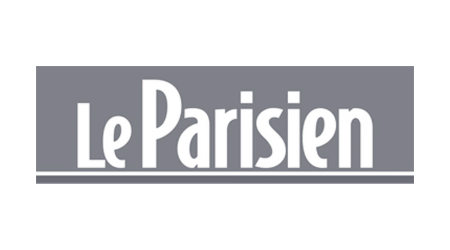Amazon est une vitrine géante qui permet d’être en un clic, à la portée de 21,5 millions de clients. Mais comment s’implanter sur Amazon de manière efficace pour son lancement B2C ? Et surtout quels sont les coûts et les bénéfices de cette solution ?
Footbar propose une nouvelle expérience pour la pratique du foot, à mi-chemin entre le sport et les jeux vidéos, le tout grâce à un capteur que le joueur porte sur la jambe pendant le match. Après avoir fait nos preuves sur le marché B2B en équipant des organisateurs de compétitions (plus de 50 000 joueurs équipés), notre deuxième étape consiste à conquérir le marché B2C afin de permettre à chaque joueur d’acquérir son propre capteur Meteor et de profiter de l’expérience quel que soit l’endroit où il joue. Si une présence sur Amazon peut sonner dans ce cas comme une évidence, nous avons souhaité mener une étude analytique afin de s’en convaincre. Cet article est une occasion pour nous de vous faire partager notre expérience et les leçons que nous en avons tirées. En bonus, vous obtiendrez avant la fin de cette article une réduction exclusive sur notre Meteor !
Ce qu’il faut savoir sur Amazon
Avant l’ouverture de notre boutique nous nous sommes posés plusieurs questions : Comment lancer sa boutique sur Amazon ? Est-il indispensable d’être sur Amazon pour un lancement BtoC ? Quelles en sont les conditions, les gains et les sacrifices d’être sur la plateforme ?
Toutes les semaines, Amazon organise des webinaires pour former les utilisateurs aux différentes facette de la création d'une boutique. Évidemment le géant a tout intérêt à mettre en place ce genre d’événements pour convaincre le plus grand nombre de se référencer sur sa plateforme et conforter ainsi sa position hégémonique. Il a donc fallu filtrer entre les informations utiles et la propagande; voici ce que nous en avons retenu.
Dans un premier temps, pour devenir vendeur sur Amazon, il faut ouvrir un compte Amazon seller qui vous donnera accès à l’ensemble de votre console de gestion. Les informations de base vous tels que le siège social, son activité et la personne en charge du compte vous seront demandées. À noter que la plateforme facture un abonnement mensuel de 39€ pour la création d’un compte vendeur. Il faut ajouter à cela, les commissions sur les ventes qui varient entre 7,21 et 20,6% selon la catégorie des produits.
Attention à la création du compte, notez 24h pour que votre carte bancaire soit autorisée. Si votre carte bancaire n’est pas validée, aucun produit ne pourra être ajouté.
20 catégories de produits
Amazon sépare ses produits en vingt catégories différentes. Il est très important de choisir la bonne catégorie, car l’algorithme Amazon sert à respecter leur promesse : satisfaire les clients. La recherche et la navigation d’un client doit être fluide pour que l’expérience soit optimale. Dans ce sens, un produit mal catégorisé sera difficile à trouver par les utilisateurs. Pour bien catégoriser son produit, vous pouvez utiliser le classificateur de produits d’Amazon. Il s’agit d’un outil permettant d’identifier la catégorie adaptée à votre produit. Vous pouvez également utiliser le guide d’utilisation de l’arborescence Amazon. Après avoir créé un fichier de stock, suivez simplement les instructions. Enfin, l’une des solutions les plus évidentes et de tester vous-même le classificateur en faisant des recherches de produits sur la plateforme Amazon.

Concernant notre capteur, nous avons cherché les produits similaires au nôtre pour choisir la catégorie la plus adaptée. Les catégories qui en ressortaient étaient High-Tech, Sports et Loisirs, Montres, Jeux et Jouets, Bricolage, Cuisine & Maison, Fournitures de bureau et Jeux vidéo. Nous nous retrouvions effectivement dans les catégories High-Tech, Sports et Loisirs et Jeux vidéo. Après la création de notre compte Amazon Seller, nous avons donc testé le classificateur Amazon. Nos recherches nous ont amenées à définir notre produit dans la catégorie Sports et Loisirs au vu des recherches sur Amazon, et de la catégorisation de nos produits concurrents.
3 programmes différents
Amazon propose différents partenariats grâce à trois programmes majeurs : retail, marketplace et FFA (Fulfillement by Amazon).

Dans le programme Retail, Amazon achète les produits au fabricant et les vend (pour cela, il faut recevoir une invitation de la part d’Amazon). Dans ce cas, le client voit la mention “Vendu et expédié par Amazon” sur la fiche produit. Amazon créé lui-même la fiche-produit, mais le fabricant a accès à une interface (Vendor central) qui lui permet de gérer les fiches-produits et de consulter les données liées aux ventes sur Ara Basic (Amazon Retail Analytics Basic). Les données supplémentaires (part de marché, visites, etc.) requièrent un abonnement payant. Néanmoins ce programme a tendance à être refusé par Amazon pour les articles ayant une marge faible, il est réservé aux produits ayant une marge unitaire élevée. Étant donné qu’Amazon fixe le prix, certaines marques, et notamment les marques de luxe refusent d’être partenaire Amazon car cela peut dégrader leur image.
Quant à cette fameuse invitation, impossible de savoir comment l’obtenir. Après avoir parcouru les centaines d’articles sur ce fameux programme et participé à un webinaire organisé par Amazon, nous n’avons également obtenu aucun retour des responsables d’Amazon interrogés sur le sujet.
Dans le programme Marketplace, le stockage, la livraison, le service après-vente (SAV) sont entièrement gérés par le vendeur. Amazon prend cependant une commission (entre 7 et 20% selon la catégorie de produits). De plus, il ne bénéficie pas du service Amazon Prime (le programme de fidélité d’Amazon) ce qui permet d’aller chercher les acheteurs les plus fidèles, soit au total 150 millions de personnes dans le monde. Amazon Prime, est un abonnement de la part des consommateurs qui leur permet d’avoir de multiples avantages liés à des services annexes et la livraison. Ils bénéficient, entre autres, de la livraison en un jour ouvrée sur les articles éligibles en France métropolitaine, à Monaco et en Belgique. Certains articles sont même disponibles à la livraison le soir même. Les clients Prime, accèdent gratuitement à d’autres services Amazon comme Prime Video (service de streaming de films et séries), Prime Prime Photos (espace de stockage de photos), Prime Music (service musical), et bien d’autres (retrouvez la liste complète) .
Le programme Fulfillment by Amazon comprend la Marketplace ainsi que le service d’expédition par Amazon. Le stockage, la livraison, le SAV sont donc entièrement géré entièrement gérés par Amazon. Le vendeur bénéficie d’un accès aux acheteurs Prime. Il permet également de vendre partout en Europe et surtout de développer de manière efficace l’activité à l’international. La politique de prix, quant à elle, géré par le vendeur. Le coût est déterminé par le type de produit vendu (son poids et ses dimensions) pour l’expédition ainsi que par le coût de stockage calculé au nombre de mètres cubes. Plus vous avez de produits à stocker, plus vous payez cher. Ce programme est automatiquement choisi lors de la création de votre compte vendeur Amazon.
C’est la solution que nous avons choisie. Pratique, elle ne nécessite aucune intervention de notre part ce qui facilite la vie de notre équipe ventes. De plus, les prestations offertes par Amazon grâce à ce programme (livraison en 24h par exemple) sont non négligeables et nous ne pouvions pas avoir un système d’expédition aussi performant. Le programme fulfillment est également un réel avantage pour nous car, étant donné, la taille de notre produit (9 grammes, de 8 mm d’épaisseur), les coûts de stockage ne sont pas importants.
Agences et entreprises spécialisées : comment choisir sa stratégie d’implantation ?
En janvier dernier nous avons été démarchés par une agence spécialisée dans le lancement et la gestion de boutiques Amazon. Nous avons repris contact avec eux, ainsi que trois agences similaires afin de voir ce qu’elles pouvaient proposer.
La première agence que nous avons contactée propose un programme de 10 semaines contenant la création du compte Amazon, la validation du processus de création de marque, l'accompagnement lors de la première expédition et le paramétrage des campagnes de pub pour un montant d’environ 2000€. En contrepartie, l’agence promet d'avoir les premières ventes au bout du 8 semaines.
La seconde agence, propose une offre bien plus conséquente en matière de coûts (l’offre intermédiaire étant de 7900€). Cette offre intermédiaire comprend création de la fiche produit et de la boutique, l’enregistrement de la marque, le coaching à la mi-parcours et à la fin du programme, un module de formation, le reporting automatique, la recommandation visuelle et la définition de la stratégie. Nous avons cependant eu l'impression que cette offre était moins concrète que la première.
La troisième agence accompagne les marques sur du catalog management (c’est-à-dire la création du produit, le positionnement du produit par rapport aux mots-clés), la business assistance (le suivi du compte, la résolution des problèmes logistiques et le suivi des promotions), la publicité (pour augmenter la visibilité via du contenu sponsorisé notamment). L’offre s’élevait à un montant de 1500€, avec en supplément la partie business assistance pour un montant de 499€.
La pertinence de ces agences dépend réellement de vos besoins, du type d’entreprise et des produits à mettre en vente. Néanmoins, les offres sont toutes plus ou moins similaires à savoir la création de la marque puis accompagnement dans le brand content et la création de la page.
Pour résumer nous pouvons dire que, seule la première agence contactée proposait de créer le compte de A à Z, les autres agences étaient davantage dans l'accompagnement. Les prix sont très variés mais globalement très élevés allant de 2 000 à 15 000€.
Si ce benchmark nous a permis de mieux cerner les enjeux d’un déploiement de produit, nous avons estimé que le coût facturé par ces agences n’était pas adapté au budget d’une startup comme la nôtre. À défaut de pouvoir travailler avec une agence payée au succès uniquement, nous avons décidé d’internaliser ce travail.
Le joker : Appel à un ami
Nous avons alors cherché conseils auprès de start-up ayant pu vivre une expérience similaire à la nôtre.
Shapeheart, start-up passée par notre incubateur Le Tremplin, commercialise un brassard avec une pochette magnétique détachable et un capteur de fréquence cardiaque intégré pour pratiquer une activité sportive en toute tranquillité et liberté.
Lors de notre échange avec Michael, son premier conseil a été de ne surtout pas passer par une agence compte tenu de notre marque et surtout du fait que nous n’avons qu’un produit unique.
Son second conseil était de faire attention à nos mots-clés pour notre référencement. Il nous a expliqué que Google et Amazon fonctionnent selon les mêmes algorithmes, et que nous n’aurions qu’à utiliser le SEO de notre site internet pour notre boutique Amazon.
La boutique Amazon est une véritable vitrine. À l’image d’une vitrine de commerçant, elle doit être soignée et mettre en avant les produits. Nos photos n’étaient alors pas conformes aux exigences d’Amazon. Michael nous a conseillés de faire appel à des designers pour modéliser en 3D notre produit.
Pour finir, Michael nous a confié quelques chiffres sur l’importance d’Amazon dans leur business. Shapeheart réalise la majorité de ses ventes sur Amazon, même si son trafic provient principalement de son site internet. Cette différence s’explique par la confiance qu’ont les clients envers Amazon. Il nous a donc conseillé d’insérer le lien de notre boutique Amazon sur notre eshop.
Cette étape a été déterminante, car elle nous a permis de savoir comment lancer notre boutique. Pas d’agence, mais une équipe motivée à faire de ce lancement un succès et les conseils d’entrepreneurs ont été nos seuls outils !
Comment mettre son produit en ligne sur Amazon ?
Après avoir créé votre compte vendeur, souscrit au programme qui vous correspond et choisit la bonne catégorie de produits, il ne vous reste qu’à mettre le produit en ligne.
Si ce n'est pas encore le cas, vous devez fournir à votre produit un numéro d'identification unique, le GTIN. Il est pour cela nécessaire d'adhérer au GS1 dont le prix qui varie selon le chiffre d’affaires de votre entreprise.
Cf le tableau des prix :

En parallèle, vous devez créer votre store Amazon. Pour ce faire, votre marque devra être enregistrée auprès du Registre des marques Amazon. Amazon devra s’assurer de l’éligibilité de votre marque. Pour cela vous devrez remplir quelques informations sur votre marque et sa propriété intellectuelle. Attention, pour pouvoir enregistrer votre marque, elle doit absolument être déposée sur le site gouvernemental de votre ville ou région.
Vient ensuite la mise en ligne du produit. Après avoir sélectionné la catégorie de produits adéquate,vous devrez remplir les informations de base sur votre marque et votre produit : nom du produit, son identifiant (code GTIN), votre nom de marque ainsi que le nom du fabricant. Ensuite, vous devrez indiquer l’offre que vous proposez pour ce produit : le prix, l’état, le canal de livraison etc.
Enfin, vous devrez télécharger les photos de votre produit. Nous, nous avons décidé de les faire nous-mêmes, à moindre coût. Pour cela nous avons utilisé un appareil photo personnel. Pour la prise de vues, nous avons choisi de le faire en extérieur; car il y avait plus de lumières qu’à l’intérieur de nos locaux. Cependant, nous le déconseillons, car vous risquez d’être gênés par le vent, les allers et venus autour de vous, etc. Nous vous conseillons d’acheter un flash ou lumière continue. Il en existe pour tous les budgets.
Enfin, notre designer s’est chargé des modifications liées à la lumière ainsi que l’uniformisation du fond grâce à l’outil Photoshop.
Avant :

Après :

La délimitation des feuilles blanches a été effacée pour uniformiser le fond, et la luminosité modifiée pour que le produit ressorte.
Pour finir, veillez à l’optimisation du SEO pour faciliter les recherches. De nombreux articles couvrent le sujet, nous n'avons pas l'expérience nécessaire pour donner des conseils supplémentaires, mais gardez en tête que c'est l'un des éléments les plus cruciaux de votre lancement.
Un autre enjeu important est de récolter des avis clients. Derrière une commande, il se cache un client et donc un possible avis sur la boutique. Vous avez donc tout intérêt à avoir une expérience client au top ! C’est ce qui déterminera le choix de futurs acheteurs. Mais comment générer les premières ventes, nécessaires aux premiers avis ? Chez Footbar, nous avons fait le choix d’offrir une réduction de 20% aux premiers acheteurs nous laissant un avis positif sur notre boutique Amazon. Vous voulez bénéficier de cette réduction ? Contactez nous sur [email protected].
6 conseils de Footbar pour l’ouverture de votre boutique
Notre choix a donc été de partir de zéro et d'internaliser lancement de la boutique. Nous avions sous-estimé le nombre d'obstacles possibles et la lenteur du service client d'Amazon à les fixer. Il aura fallu au total près de 3 mois avant que notre boutique soit enfin fonctionnelle.
Les étapes sont clés sont :
- La définition de vos objectifs. Pourquoi voulez-vous être sur Amazon ?
- L’inscription au programme fulfillment d’Amazon. En plus d’être libéré de toutes les taches d’envoi de produits et de SAV, vous bénéficiez de l’accès à “Amazon prime”. C’est un aspect à ne pas négliger car 150 millions de clients sont abonnés dans le monde.
- La création de votre vitrine. Une jolie boutique, des fiches-produits en béton grâce à vos recherches SEO et des photos qui en jettent sont la clé du succès.
- L'obtention d’avis clients très rapidement. Votre plan de communication est peut-être la solution pour les recruter.
- L’insertion du lien de votre boutique Amazon sur votre shop. Les gens ont plus confiance dans une multinationale qu’ils connaissent depuis des années qu’en vous. On sait, c’est pas juste.
- Nous n'avions pas d'intérêt à passer par une agence, notamment parce que nous avons un produit unique. Si en revanche vous êtes pressés ou n'avez pas de ressources internes à staffer sur le projet, cela peut s'avérer indispensable.
Dans quel cas se passer d’Amazon pour un lancement B2C ?
Amazon est une évidence pour un grand nombre de retailers. Il permet de toucher des millions de consommateurs en un clic. Mais Amazon n’est pas indispensable pour un lancement B2C, et pour preuve, beaucoup d’entreprises du retail s’en passent comme les grandes entreprises de textiles (Zara, H&M), les magasins de bricolage et de décoration (Gifi, Leroy Merlin), etc. Mais pas seulement, des start-up B2C ont aussi réussies leur coup, comme Cheerz. Le site d’impression photo référence, créé en 2012, a effectué une levée de fonds de 6 millions d’euros en 2015, et a revendu 80% de ses parts à Cewe pour un montant total de 36 millions d’euros en 2017. Une belle évolution pour une start-up du retail qui n’est pas passée sur Amazon.
Pour qu’Amazon soit bénéfique pour votre entreprise et que la plateforme apporte une réelle plus-value, il faut que cela soit pertinent compte tenu de votre marché, des habitudes de consommation de vos acheteurs ainsi que de votre produit. Par exemple, si vous vendez des équipements pour les personnes âgées et que donc votre cible représente les gens de plus de 70 ans, Amazon n’est peut-être pas fait pour vous. En 2018, seulement 26% des personnes de plus de 70 ans ont acheté sur internet, contre 84% pour les 18-24 ans selon Statista.
Mais attention, les modes de consommation évoluent très rapidement, alors restez connectés et effectuez des vieilles de temps à autre pour savoir s’il est temps pour vous de passer sur Amazon. Selon Satista, rien que sur Amazon, le nombre de visites a quintupler entre 2016 et 2019.
On espère que ce retour d'expérience vous sera utile, nous le mettrons à jour dans les semaines qui suivent le lancement afin de donner un retour plus complet. En attendant, si vous voulez profiter de notre réduction de lancement pour vous ou vos proches, n'hésitez pas à contacter [email protected] !









